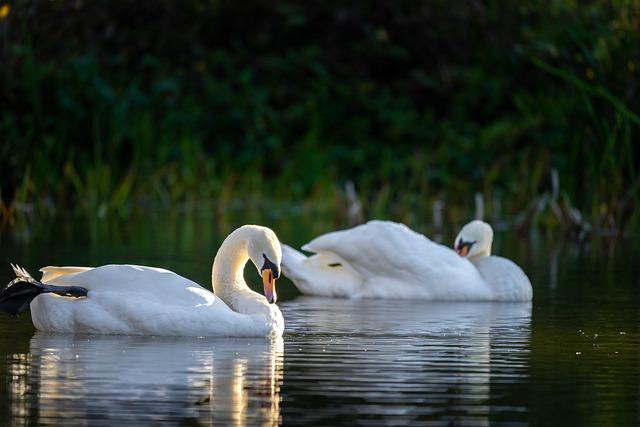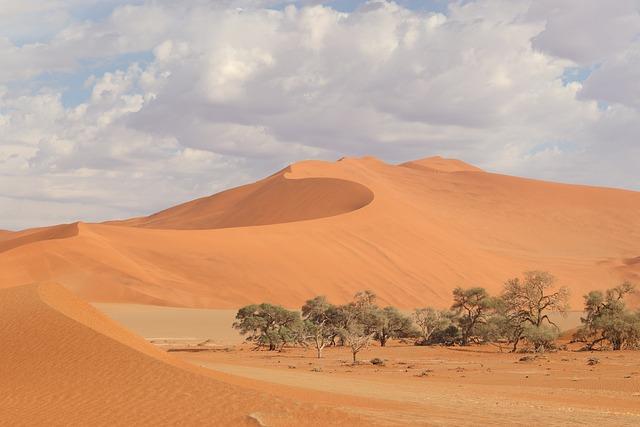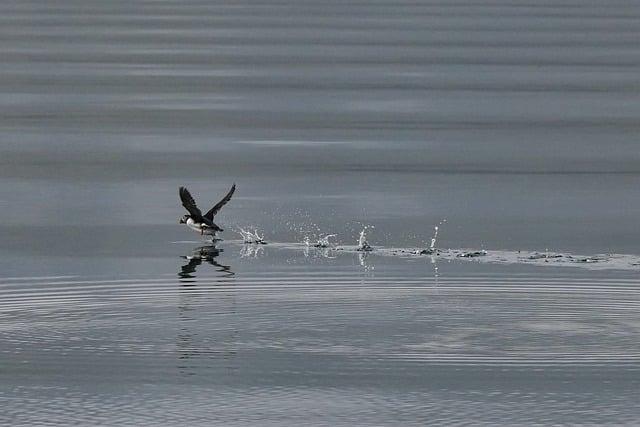Within the center of Southwest Africa, Namibia is making headlines for a arguable resolution that has sparked an international debate on flora and fauna control and conservation ethics. The Namibian govt has introduced plans to cull loads of its majestic wild animals, together with elephants, giraffes, and othre iconic species, to meat manufacturing. This initiative, geared toward addressing each meals safety and human-wildlife war, raises critical questions in regards to the stability between conservation efforts and the urgent wishes of native populations. As the rustic grapples with the results of this resolution, stakeholders from environmental activists to native communities are weighing in at the doable affects—each ecological and socio-economic. This newsletter delves into the explanations at the back of Namibia’s drastic measures, the reactions from more than a few sectors, and the wider implications for flora and fauna conservation in a converting international.
Figuring out Namibia’s Arguable Resolution on Natural world Culling
Namibia’s resolution to cull flora and fauna is deeply rooted in a posh interaction of ecological stability, neighborhood wishes, and financial pressures. Confronted with emerging populations of positive species,corresponding to elephants and antelope,the federal government argues that culling is important to control those populations and save you overgrazing,which can result in habitat destruction. Native farmers are in particular involved, as expanding flora and fauna numbers pose dangers to their livelihoods by way of destructive plants and water assets. The federal government’s way comprises no longer most effective inhabitants keep watch over but in addition addressing meals safety by way of changing the culled animals into meat for native communities.
The reasoning at the back of the culling coverage additionally highlights broader problems inside conservation efforts, corresponding to securing the participation and beef up of rural populations. To mitigate opposition and foster collaboration, Namibia advocates for:
- Neighborhood-based Herbal Useful resource control (CBNRM) methods
- Incentives for sustainable farming practices
- Ecotourism alternatives to spice up native economies
In balancing conservation with human wishes, Namibia seeks to redefine the connection between flora and fauna and communities. This technique comes to a multifaceted way that goals to optimize no longer simply the ecological sustainability but in addition the socio-economic advantages for the folk residing along those majestic creatures.
The Financial Implications of culling Natural world for meat Provide

The verdict to cull flora and fauna in Namibia has stirred a posh debate over the industrial implications of this arguable observe. On one hand, culling can generate severely necessary monetary sources during the direct provide of meat to native communities and markets, contributing to meals safety in a rustic the place starvation stays a urgent factor. Culling methods too can stimulate similar sectors corresponding to tourism and business. Natural world harvested for meat will also be advertised as a substitute protein supply,doubtlessly decreasing reliance on typical farm animals,and opening avenues for distinctive culinary reviews. Native employment alternatives in sustainable meat processing and distribution might rise up, thereby boosting the financial system at a grassroots stage.
Even though, those financial advantages will have to be weighed in opposition to the long-term penalties of flora and fauna inhabitants depletion. The ecological stability is the most important, as each and every species performs a particular position in its habitat, and loss can result in unexpected repercussions. Moreover, the belief of Namibia as a vacation spot for flora and fauna tourism may undergo if looking practices are noticed as over the top or irresponsible. Key concerns come with:
- Marketplace sustainability: making sure that meat provide does no longer undermine flora and fauna conservation.
- Ecological have an effect on: comparing the well being of ecosystems and biodiversity.
- Neighborhood advantages: figuring out how native populations can get advantages with out resorting to culling.
Balancing financial wishes with ecological integrity stays a important problem shifting ahead.
Balancing Conservation and Human Wishes in Namibia

Namibia’s technique for managing its flora and fauna displays a posh interaction between ecological preservation and neighborhood wishes. With rising populations and lengthening calls for on land, the federal government is faced with the urgent problem of making sure that each flora and fauna conservation and human welfare can coexist. The deliberate culling of positive animal populations is noticed by way of some as a important measure to handle those subtle balances. native communities are incessantly at the leading edge of this debate, as their livelihoods rely at the availability of sources, together with farm animals and land, that may be adversely impacted by way of massive wild animal populations.
On this context, the way taken by way of Namibia highlights the significance of sustainable practices, the place flora and fauna control efforts come with:
- Incorporating native agricultural wishes
- Making sure meals safety thru managed useful resource allocation
- Using animal culling for meat distribution to communities
- Fostering eco-tourism to advertise conservation whilst supporting native economies
This multifaceted plan positions Namibia as a possible type for different nations facing similar dilemmas, appearing that balancing the calls for of conservation with the realities of human wishes is each achievable and important for long-term sustainability.
Moral Issues Surrounding Natural world Control practices

The verdict to cull flora and fauna in Namibia raises vital moral questions that resonate past nationwide borders. As conservation efforts incessantly collide with the urgent calls for of native communities, the complexities of balancing ecological integrity with human wishes transform obtrusive. Moral concerns come with the rights of animals, the have an effect on on biodiversity, and the welfare of native tribes, who might depend on flora and fauna for sustenance and cultural id.The argument posits that whilst sustainable use of flora and fauna can beef up neighborhood livelihoods, it will have to be meticulously regulated to forestall over-exploitation and lack of species important to ecosystem well being.
Additionally, the reason at the back of killing loads of untamed animals for meat will have to be scrutinized within the context of different control practices. Stakeholders are instructed to believe non-lethal strategies corresponding to translocation, fertility keep watch over, or eco-tourism projects that would supply financial advantages whilst retaining the integrity of flora and fauna populations. It’s the most important to ascertain a clear conversation amongst policymakers, conservationists, and native communities to be sure that flora and fauna control displays a dedication to each moral requirements and ecological sustainability.
Doable Affect on Namibia’s Tourism and Ecosystem Well being

Namibia’s resolution to cull loads of its wild animals may precipitate vital adjustments in each its tourism sector and the full well being of its ecosystems. The belief of Namibia as a premier flora and fauna vacation spot might shift dramatically if hunters and conservationists alike react negatively to this arguable coverage. Necessary facets to believe come with:
- Lack of Biodiversity: Culling may result in a decline in species populations,disrupting the sophisticated stability of the ecosystem.
- Tourism Attraction: Vacationers attracted by way of Namibia’s wealthy biodiversity might select to talk over with choice locations if flora and fauna numbers diminish or if moral issues rise up.
- Financial have an effect on: Natural world tourism is a cornerstone of Namibia’s financial system; a decline in visitation can have cascading results on native companies depending on tourism.
Additionally, the control of Namibia’s flora and fauna must believe the long-term implications of such movements on ecological well being. Culling may create vital imbalances, because the removing of enormous herbivores impacts a lot of different species and habitats. Key issues to watch come with:
- Habitat Degradation: Overpopulation of positive species might result in overgrazing and habitat deterioration, impacting each natural world.
- Public sentiment: Rising global condemnation might impact native and nationwide insurance policies, resulting in shifts in conservation methods.
- Long run Conservation Efforts: The have an effect on on community-led conservation initiatives may undermine years of development made in protective Namibia’s herbal heritage.
Suggestions for Sustainable Natural world Control Methods

To deal with the urgent demanding situations of flora and fauna control whilst making sure sustainability, a number of cutting edge methods will also be carried out. Those come with:
- Neighborhood Engagement: Involving native communities in conservation efforts can result in more practical control methods. Empowering citizens thru training and financial incentives fosters a way of possession over native flora and fauna.
- Tracking and Analysis: Steady tracking of flora and fauna populations and habitats is helping in making knowledgeable selections.Clinical analysis into animal habits and ecology can divulge efficient control practices that minimize human-wildlife conflicts.
- Habitat Recovery: Restoring degraded environments no longer most effective advantages flora and fauna but in addition complements ecosystem services and products that beef up agricultural practices and native livelihoods.
- Sustainable Looking Practices: Imposing regulated looking methods can assist set up animal populations whilst offering financial advantages. This will have to be in moderation balanced with conservation targets to verify species preservation.
Moreover, setting up partnerships between governments, NGOs, and native communities can magnify the have an effect on of conservation projects. Collaborative methods might come with:
| Technique | Advantages |
|---|---|
| Built-in Natural world Corridors | Facilitates animal motion, reduces human-wildlife war. |
| ecotourism Building | Supplies earnings for communities, incentivizes conservation. |
| Regulation and Coverage Reform | Strengthens protections for endangered species, promotes sustainable practices. |
The Conclusion
Namibia’s resolution to cull loads of its wild animals within the title of sustainable meat manufacturing has sparked intense debate each in the community and across the world. As the rustic grapples with problems with meals safety, financial necessity, and conservation, this arguable way has raised important questions on stability—between protective biodiversity and addressing the desires of its other folks.Whilst proponents argue that managed culling can result in a extra sustainable use of herbal sources, critics worry it should undermine conservation efforts and the ecological integrity of pristine ecosystems. As Namibia strikes ahead with its plans, the arena can be staring at carefully, hoping for an answer that honors each its wealthy flora and fauna heritage and the pressing wishes of its communities. The end result will most likely affect conservation insurance policies no longer simply in Namibia, however around the globe, highlighting the continuing battle to reconcile human wishes with the preservation of our planet’s outstanding biodiversity.
Source link : https://afric.news/2025/03/01/why-namibia-plans-to-kill-hundreds-of-its-majestic-wild-animals-for-meat-the-indian-express/
Creator : Isabella Rossi
Post date : 2025-03-01 22:16:00
Copyright for syndicated content material belongs to the connected Source.



